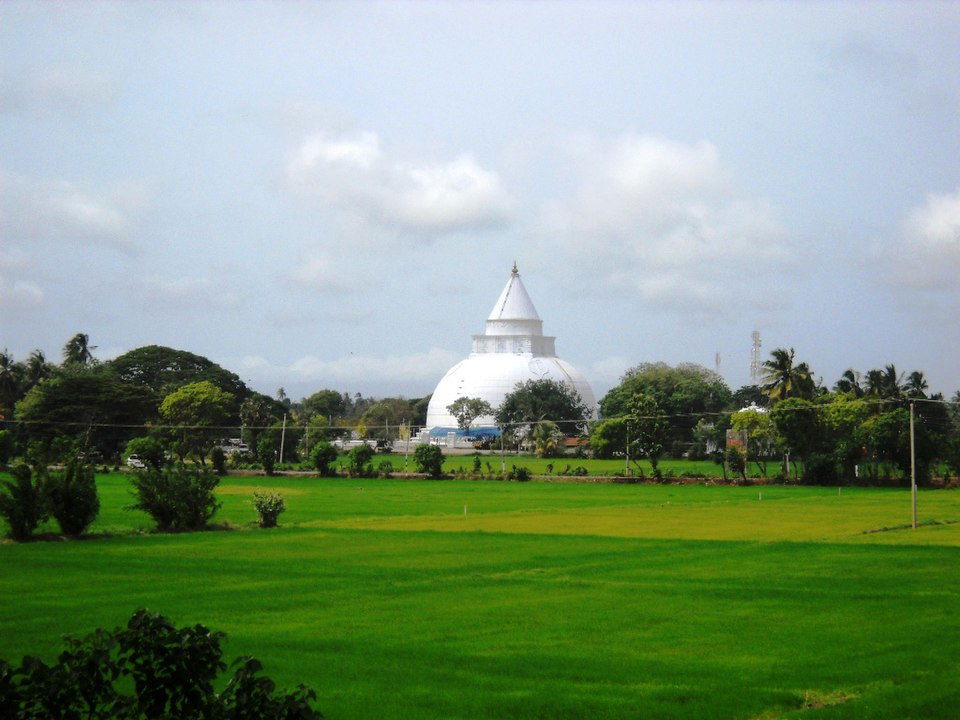How To Enjoy Your Trip to Tissamaharama – An explosive mix of history, exotic wildlife, and tranquillity
Sri Lanka is renowned for its exotic beaches, serene hill country, and mesmerising cultural attractions. Yet few ever venture into the lesser-known areas of this island paradise, which are as wonderful and exciting as the rest. Tissamaharama, a quaint, historic town located in the Hambantota district, is one such area that must be visited when travelling along Sri Lanka’s southern stretch. Discover how you can enjoy your trip to Tissa, as it is colloquially known.

Marvel at historic Tissa landmarks
Begin your trip at the Tissamaharama Raja Maha Viharaya, a sacred complex steeped in history. If your chosen accommodation is in Tissa, such as Kithala Resort, the temple complex is just a stone’s throw away. The highlight of the temple grounds is the Tissa Dagoba, as it is more famously known, a pearl-white temple standing at the height of 55.8m. The dagoba was said to have been built by King Kavantissa. The temple supposedly enshrines a holy tooth relic and a forehead bone relic of Buddha. Next to the dagoba, you will find a statue of Queen Viharamahadevi, the wife of Kavantissa.Walk on a few metres to discover the Sandagiri Stupa, a red-brick structure considered one of the oldest stupas in Sri Lanka, dating as far back as 2000 years. This stupa, together with Menik Dagoba, located nearby, was believed to have been built by King Mahanaga for the monks. The Sandagiri Stupa is situated in an ancient monastic complex.
Bask in the soothing atmosphere of ancient lakes
Not far off from Tissa Dagoba is the Tissa Wewa, an ancient reservoir that adds charm and beauty to Tissamaharama. Hotels in the area are located within the vicinity of the lake, and hence it is easily accessible. Take an evening stroll along the lakeside walkway. Better yet, consider a boat ride at sunset to enjoy the stillness of the surroundings and the soothing effect of the water. You may also be able to spot flocks of migratory birds and bat colonies hanging from the trees.Debarawewa Lake is located almost side by side to Tissa Wewa. The area surrounding the lake is known as Debarawewa, which translates to mean a lake of wasps. This lake is another aquatic beauty that needs to be admired. It is covered in water lilies and is home to water buffaloes and birds. Occasionally, you may be able to spot some crocodiles.
Explore a bygone era
Located near the Tissa Wewa, Yatala Wehera is another ancient Buddhist stupa dating back to the 3rd century B.C., believed to have been constructed by King Mahanaga. The stupa houses a traditional moonstone bordered by a sculptured wall replete with intricate details of elephant heads. There is a small museum adjoining the stupa where you can learn more about the history of this ancient site and marvel at the fascinating display of ancient artefacts.
Indulge in bird watching
Located just a few minutes away from Tissamaharama is an exotic bird sanctuary called Wirawila Tissa Sanctuary. The sanctuary is home to over 400 seasonal, aquatic, and jungle birds.Drive about 20 to 30 minutes south of Tissamaharama to visit the famous Bundala National Park. This wetland park is a renowned bird sanctuary showcasing more than 200 migratory birds and a plethora of plant species.
Get acquainted with Sri Lanka’s wildlife
The beauty of Tissamaharama is that it is conveniently located within close proximity to many national parks. A 30-minute drive will take you to Sri Lanka’s famous wildlife sanctuary, the Yala National Park, renowned as the home of the leopards. The sanctuary is home to other wildlife, such as hundreds of elephants, including tuskers, sloth bears, peacocks, crocodiles, spotted and barking deer, and sambars. You will also be treated to several leopard sightings as there are about a hundred leopards in the park.
Unveil hidden seaside gems
A visit to Tissamaharama is not complete without venturing out to the seaside town of Kirinda, located 10km southeast of Tissamaharama. This rustic yet idyllic town by the sea is steeped in history and legends, mainly revolving around Queen Viharamahadevi. Visit the Kirinda Raja Maha Viharaya, situated on seaside rocks, for a captivating experience. Head down to the beach and enjoy a relaxing stroll. If you fancy some adventure, then consider snorkelling at the Great and Little Basses Reef off Kirinda Beach to witness a stunning display of marine and coral life. There are also shipwrecks in the vicinity that can be explored. Keep in mind, however, that the ideal time to go snorkelling is between March and April.
